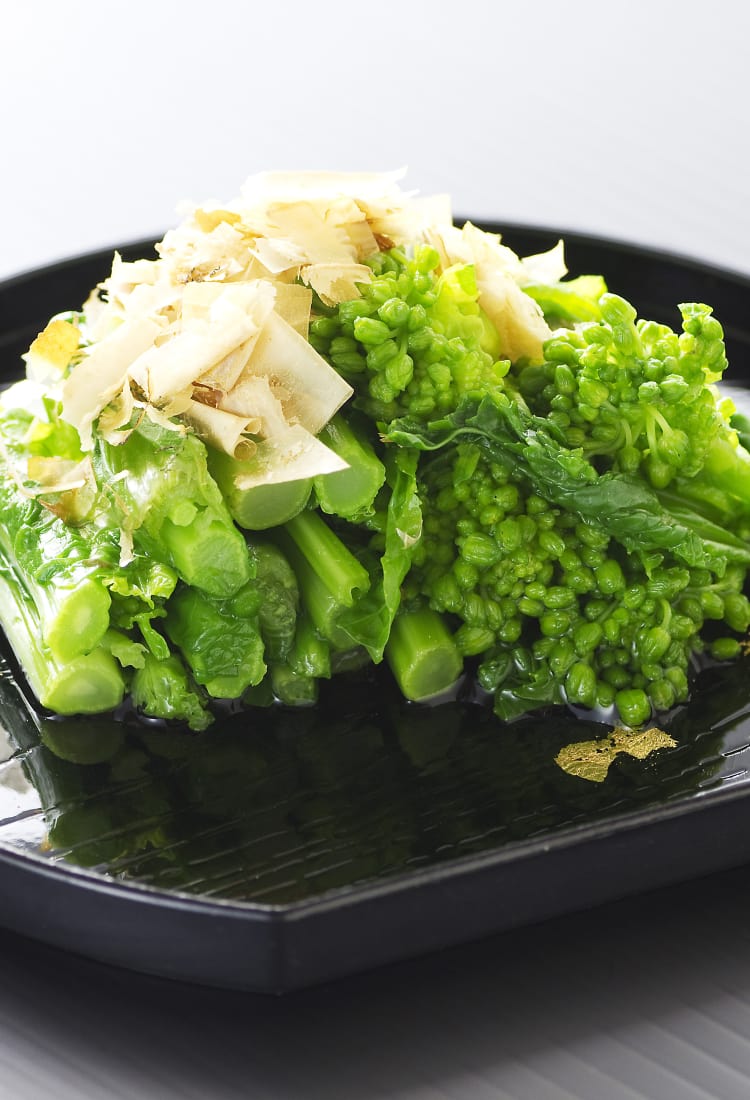Beautiful, refined and reverent best describe Japan's approach to food
Washoku, traditional Japanese cuisine, was added to the UNESCO Intangible Cultural Heritage List in December 2013. This well-deserved recognition honors the respect and appreciation of the season, and the beauty of the ingredients, with which Japanese dishes are prepared. This attention to detail extends to the service ware they are presented on. From the lofty heights of kaiseki to a small inn's breakfast, washoku is a feast for the senses.
What is Japanese cuisine?

Freshly caught fish served as sashimi or sushi, chewy udon noodles or multi-course kaiseki cuisine served at exclusive restaurants all share some defining characteristics, binding them together in the Japanese culinary tradition. The use of fresh, seasonal ingredients is the first major factor. Another feature is the use of dashi, a broth made from ingredients rich in umami, such as bonito, kelp or boiled dried fish. This umami gives a richness and depth of flavor to tie together the other flavors of sweet, sour, salt and bitter.
Table manners
Japanese table etiquette is originally based on the guests showing appreciation for the efforts taken by the hosts. It is a true form of the “omotenashi” mentality shared in Japanese culture. By taking steps above and beyond what is expected, both the host and the guest are able to have a memorable experience.
Do's and don'ts
Do feel free to slurp your noodles.
Do try your best to finish all your meal.
Do bring the serving dishes to your mouth, not vice-versa.
Do break food into manageable pieces before bringing it to your mouth.
Don't disregard how food is served (Don't disassemble a dish or eat from the bottom to the top)
Don't put your elbows on the table.
Don't eat directly from the communal platter (first take some and put it on your own smaller plate, then enjoy)

The basic structure of washoku
With a focus on balance, Japanese cuisine is based around bringing out the most flavor from ingredients rather than adding heavy sauces. The basic meal consists of soup, several side dishes and a bowl of steamed rice. The soup is often a clear soup with fish or chicken or miso, and the sides can be any variety of fresh, seasonal ingredients. Also worth noting is the placement of the dishes. Front left, in the spot reserved for the most important item, is the rice. Behind you'll find the sides, and finally the soup in the front right.
How to use chopsticks

It may seem like a daunting task to the uninitiated, but chopsticks are quite simple to use. A little practice will go a long way in making your meal time a much more comfortable experience. Start by resting one chopstick between the base of your thumb and the tip of your ring finger. For the second chopstick, imagine you're holding a pencil between your thumb, index and middle fingers. Only the top chopstick should move when picking up food. Now you can move it around and will be able to grab even the smallest objects. Practice a little by picking up any and everything, and then go out and enjoy your newfound skills.
Chopsticks don'ts
While they're simple to use, there are some common faux pas you should try and avoid when using chopsticks. Don't use them like a spoon, or a knife and a fork. Try not to stab things either — they're not for skewering foods. Holding them together in one hand is also frowned upon, as is pointing with them. Don't use them to pull plates and bowls around the table either. The two biggest no-no's of chopstick use are sticking them vertically in your bowl of rice and passing food from chopsticks to chopsticks.
Pouring drinks

Hold the bottle, label facing up, with your right hand and support it with your left hand on the base. Pour for others but don't pour for yourself—let someone else do it for you. If someone is filling up your drink, the polite thing to do is hold and slightly tilt your glass. Unlike food, it is perfectly acceptable to not finish your drink. An empty glass is a glass that needs refilling, so if you're not looking for refills, just leave your glass full.


























































